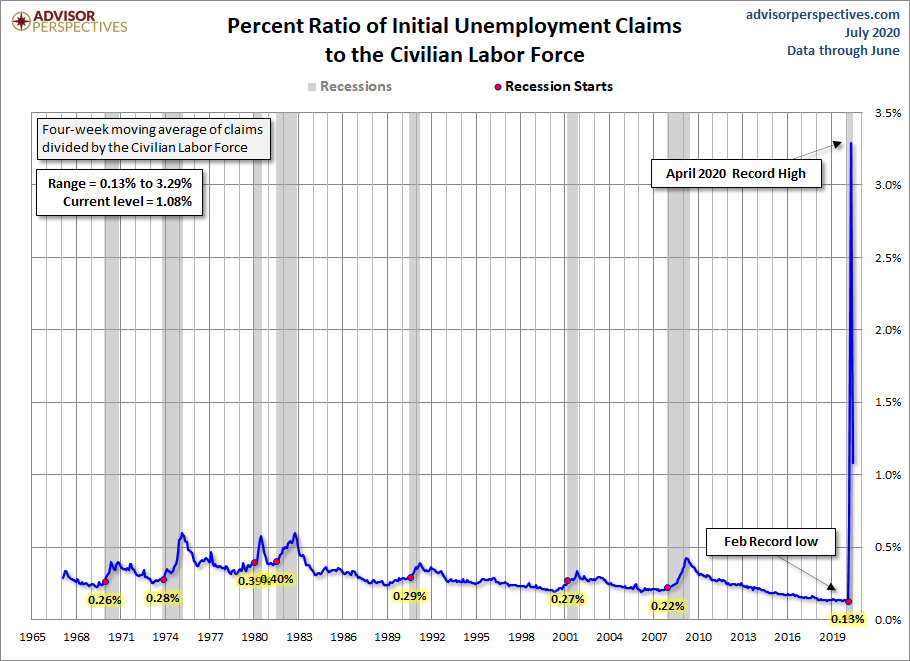Weekly Unemployment Claims: 1.31M, Down 99K From Last Week
Here is the opening statement from the Department of Labor:
COVID-19 Impact
The COVID-19 virus continues to impact the number of initial claims and insured unemployment. This report includes information on claimants filing Pandemic Unemployment Assistance and Pandemic Emergency Unemployment Compensation claims.In the week ending July 4, the advance figure for seasonally adjusted initial claims was 1,314,000, a decrease of 99,000 from the previous week's revised level. The previous week's level was revised down by 14,000 from 1,427,000 to 1,413,000. The 4-week moving average was 1,437,250, a decrease of 63,000 from the previous week's revised average. The previous week's average was revised down by 3,500 from 1,503,750 to 1,500,250.
The advance seasonally adjusted insured unemployment rate was 12.4 percent for the week ending June 27, a decrease of 0.5 percentage point from the previous week's revised rate. The previous week's rate was revised down by 0.3 from 13.2 to 12.9 percent. The advance number for seasonally adjusted insured unemployment during the week ending June 27 was 18,062,000, a decrease of 698,000 from the previous week's revised level. The previous week's level was revised down by 530,000 from 19,290,000 to 18,760,000. The 4-week moving average was 19,085,500, a decrease of 636,000 from the previous week's revised average. The previous week's average was revised down by 132,500 from 19,854,000 to 19,721,500. [See full report]
This morning's seasonally adjusted 1.314M new claims, down 99K from the previous week's revised figure, was worse than the Investing.com forecast of 1.375M.
Here is a close look at the data over the decade (with a callout for the past year), which gives a clearer sense of the overall trend in relation to the last recession.

As we can see, there's a good bit of volatility in this indicator, which is why the 4-week moving average (the highlighted number) is a more useful number than the weekly data. Here is the complete data series.

The headline Unemployment Insurance data is seasonally adjusted. What does the non-seasonally adjusted data look like? See the chart below, which clearly shows the extreme volatility of the non-adjusted data (the red dots). The 4-week MA gives an indication of the recurring pattern of seasonal change (note, for example, those regular January spikes).

Because of the extreme volatility of the non-adjusted weekly data, we can add a 52-week moving average to give a better sense of the secular trends. The chart below also has a linear regression through the data.

For an analysis of unemployment claims as a percent of the labor force, see regularly updated piece The Civilian Labor Force, Unemployment Claims and the Business Cycle. Here is a snapshot from that analysis.




